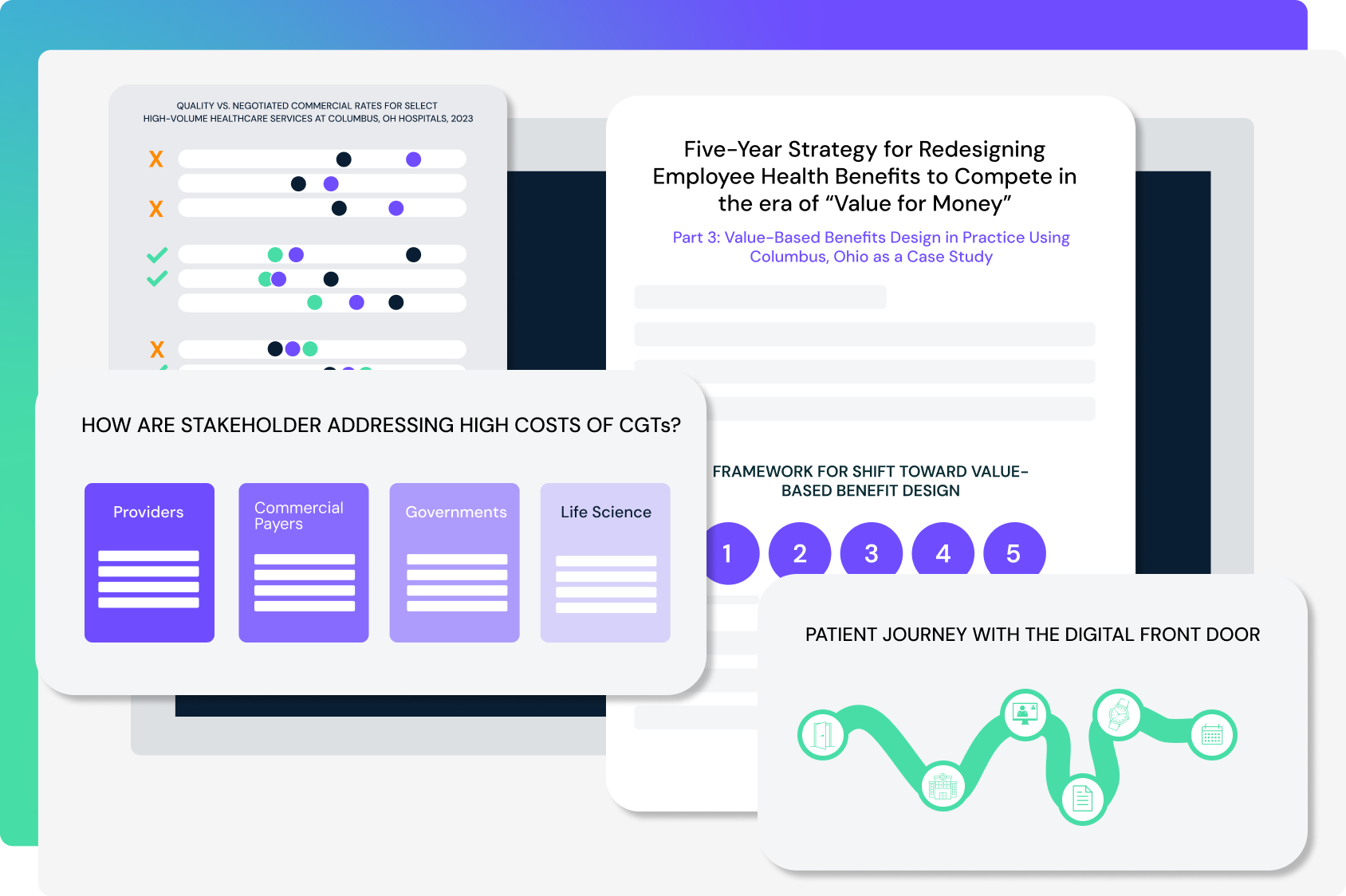2023 Trends Shaping the Health Economy Report
The only study of its breadth and depth, our 2023 Health Economy Trends Report highlights 10 evidence-based trends that will define the landscape, and subsequent challenges, for all stakeholders in the health economy.
- Introduction: The Status Quo
- 10 Key Health Economy Trends
- Conclusion: Value for Money
- Methodology
Report Summary
With more than 100 data stories supporting the highlighted trends, the report synthesizes seemingly different data to provide greater context for every stakeholder – from providers and payers to life sciences and new entrants.
Each edition of the annual Trends Shaping the Health Economy Report is designed to challenge stakeholders to reflect on the future of the U.S. health economy and think critically about what each trend means for their organization. The 2023 edition poses this question: How will you deliver value for money to the individuals you serve?
Key Takeaways
- Cancer mortality is increasing for Americans ages 35-44, while decreasing for older age groups. While national cancer mortality rates have been declining for many years, the variation in rate by age has changed in more recent years.
- As new primary care models continue to scale, national provider supply will become more constrained. Patient panel sizes suggest that the U.S. would need an additional 218K primary care providers to meet the needs of every American under the new entrant primary care model.
- Negotiated rates for a single service delivered at comparable quality, in the same market can vary substantially across payers. Even for a common procedure like screening colonoscopies that is preventive and traditionally delivered in lower-cost outpatient settings, the state-median negotiated rate ranges from $368 to $836, a 2.3X difference.
Methodology
A variety of data sources were leveraged as part of this research, with most insights gleaned from Trilliant Health’s proprietary datasets with visibility into patients and providers across the country. Trilliant Health’s national all-payer claims dataset combines commercial, Medicare Advantage, traditional Medicare and Medicaid claims, which provides a nationally representative sample accounting for more than 300 million American lives on a deidentified basis. Trilliant Health’s consumer dataset includes a range of psychographic (e.g., behaviors, preferences), demographic, social determinants (e.g., broadband) and lifestyle (e.g., wearable) data, inclusive of variables sourced from third-party datasets.
Trilliant Health’s Demand Forecast leverages General Linear Mixed Models (GLMMs) in combination with more than 100B rows of claims data to project future demand for healthcare services over a 5- and 10-year horizon. Trilliant Health’s Provider Directory enables a direct view into providers and their practice patterns. Trilliant Health’s health plan price transparency dataset is comprised of health plan machine-readable files that have been parsed, then analyzed in combination with the Provider Directory to reveal the negotiated reimbursement rate between any health plan and any provider for any service rendered at any location.
Additional data were obtained from a variety of public sources, including individual company financial statements, Census Bureau, Kaiser Family Foundation, the Congressional Budget Office, American Hospital Association, American Medical Association, Centers for Disease Control and Prevention, Healthcare Cost Report Information System and the Bureau of Labor Statistics.
About the Author

Compass+
Track the latest developments across the health economy.
Subscribe to Compass+ for additional analyses, market-specific trends, ongoing tracking throughout the year and more. With a subscription, you will receive:
- Tailored analysis and health policy insights
- Interactive data dashboards to track trends
- Executive commentary and perspectives
- A slide library to inform internal presentations